Estepona is a pretty, traditional, Spanish fishing town, the cycle track wends through the town
By Nick Nutter | Updated 9 Sep 2022 | Málaga | Cycling |
Login to add to YOUR Favourites or Read Later
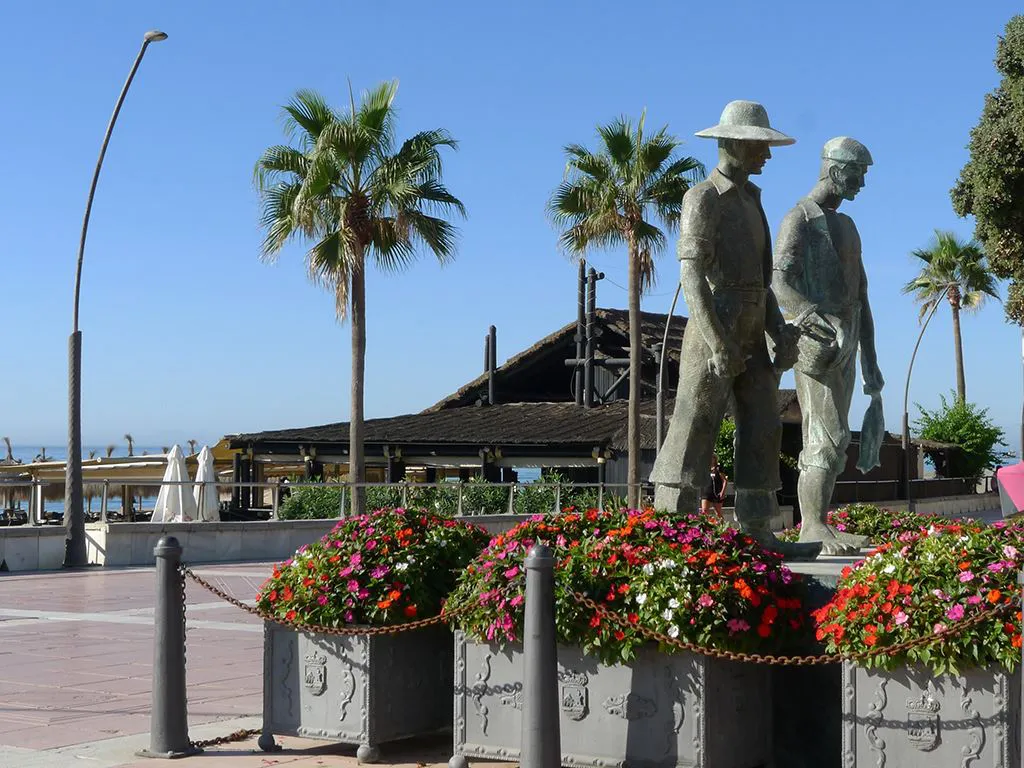
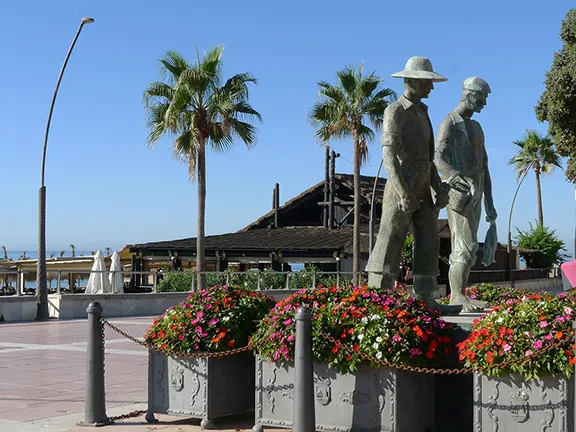
Estepona Paseo - Image by Philip Crawford
Estepona is a pretty, traditional, Spanish fishing town towards the western end of the Costa del Sol. To the west of the town is the port, still with an active fishing fleet and a few bars and restaurants. Just beyond is the sheltered, shallow Christo bay, great for kids, with two chiringuitos. East of the port and lighthouse is the main town of Estepona. White washed houses each side of narrow streets, pedestrianised shopping areas and a 2 kilometre long paseo. The whole town is bedecked with flowers in planters, baskets, on balconies and beds. There are numerous cafes, bars and restaurants, many are traditional Spanish, others are international. You will find evidence of Estepona’s two thousand year history in the streets, the remains of a Roman mausoleum, a section of a Mediaeval city wall and, dominating the town, the distinctive blue and white tiled hexagonal steeple roof of the Iglesia Santa Maria de los Remedios bell tower.
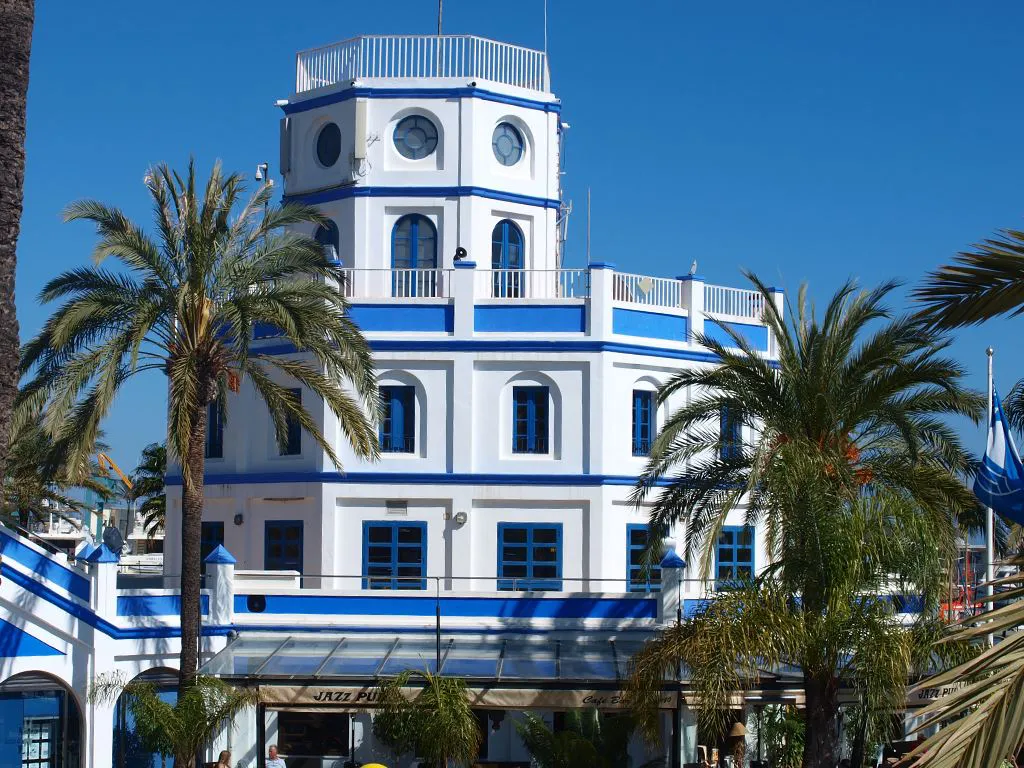
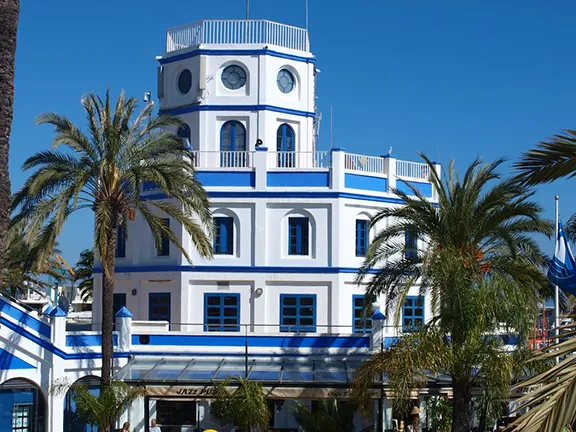
Estepona Marina
From Plan B, a cafe bar on the top level at Estepona Port and excellent meeting point: Turn left on Av. Luis Braille. At the roundabout with Supercor opposite, turn left. At the roundabout to the port entrance (with a distinctive clock on it) go straight ahead and join the blue cycle track, just follow the white arrows painted on the track. Generally cyclists have right of way when they are on the track. Traffic lights allow you to cross the main road and side streets, on the cycle track, in safety. Turn left to enjoy the flower beds as the track takes you to the west end of the town, about 1 kilometre, where you must turn round.
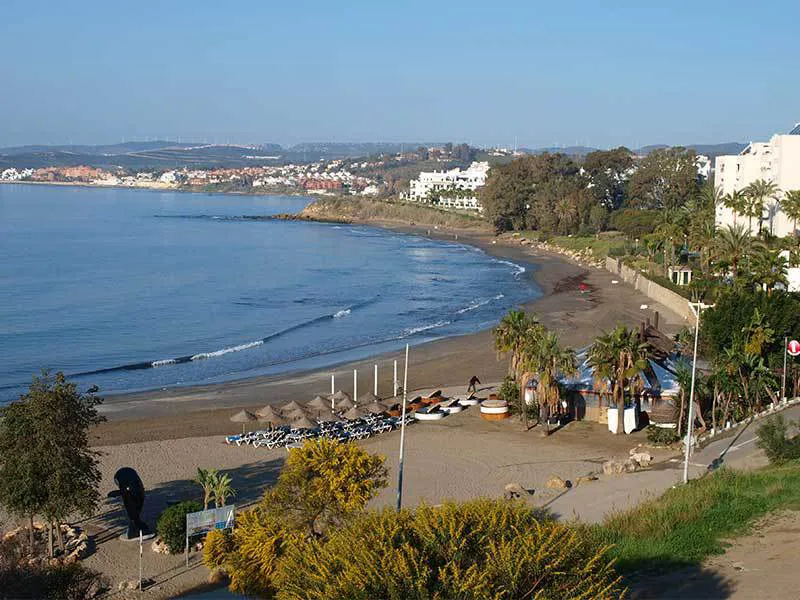
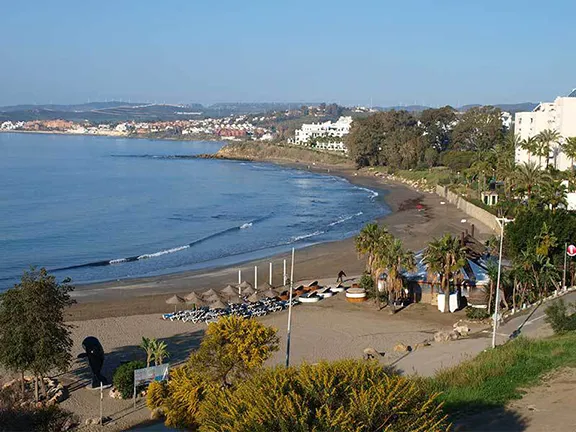
Cristo Bay, Estepona
Christo Bay is clearly visible on the seaward side accessed down a steep road. Gibraltar and, on a clear day, Africa are on the horizon.
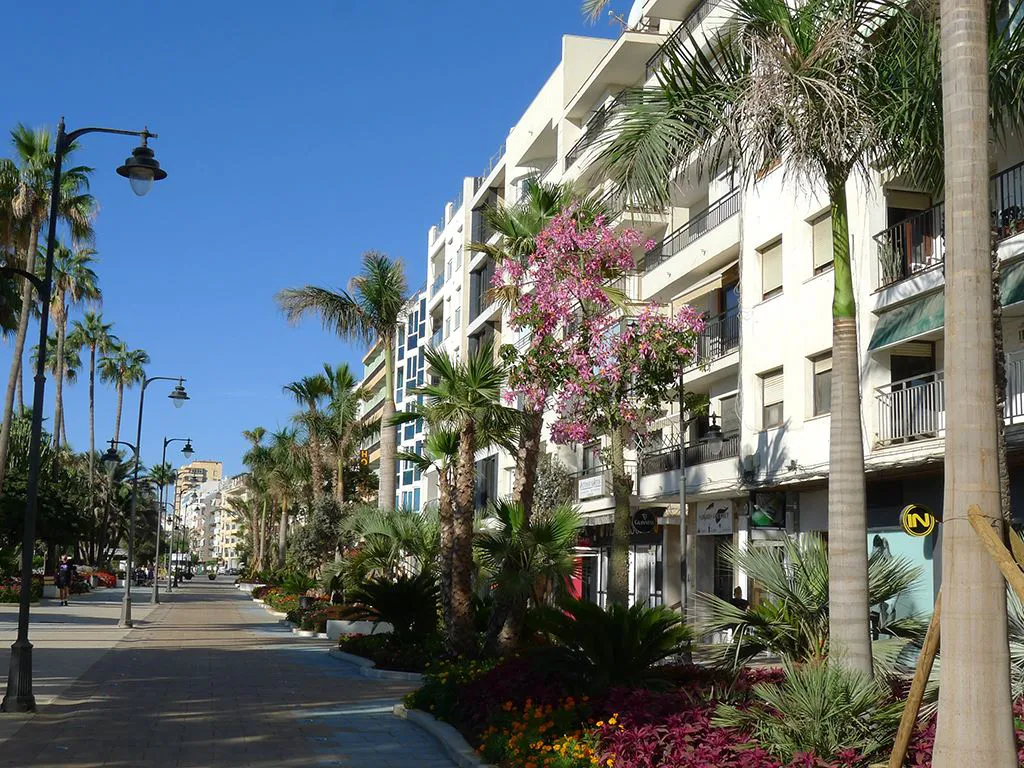
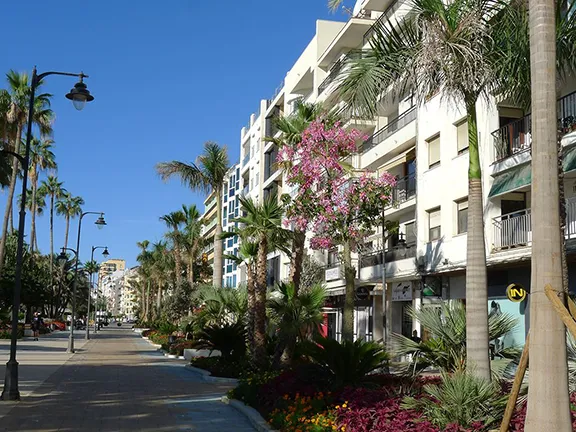
Estepona Paseo - Image by Philip Crawford
Return to the point you joined the cycle track and carry straight on. You crest a small hill and the town of Estepona is spread out in front of you, all sheltered by the mass of the mountain Los Reales, just a few kilometres inland. After a couple of hundred metres the cycle track ends after depositing you on the paseo (promenade). The paseo becomes the cycle track. Here pedestrians have right of way. The paseo will take you just over 2 kilometres to the far end of town. There are numerous places to stop for refreshment and cycle hoops are provided at strategic points. You can even stop and have a game of pavement chess if you so wish.
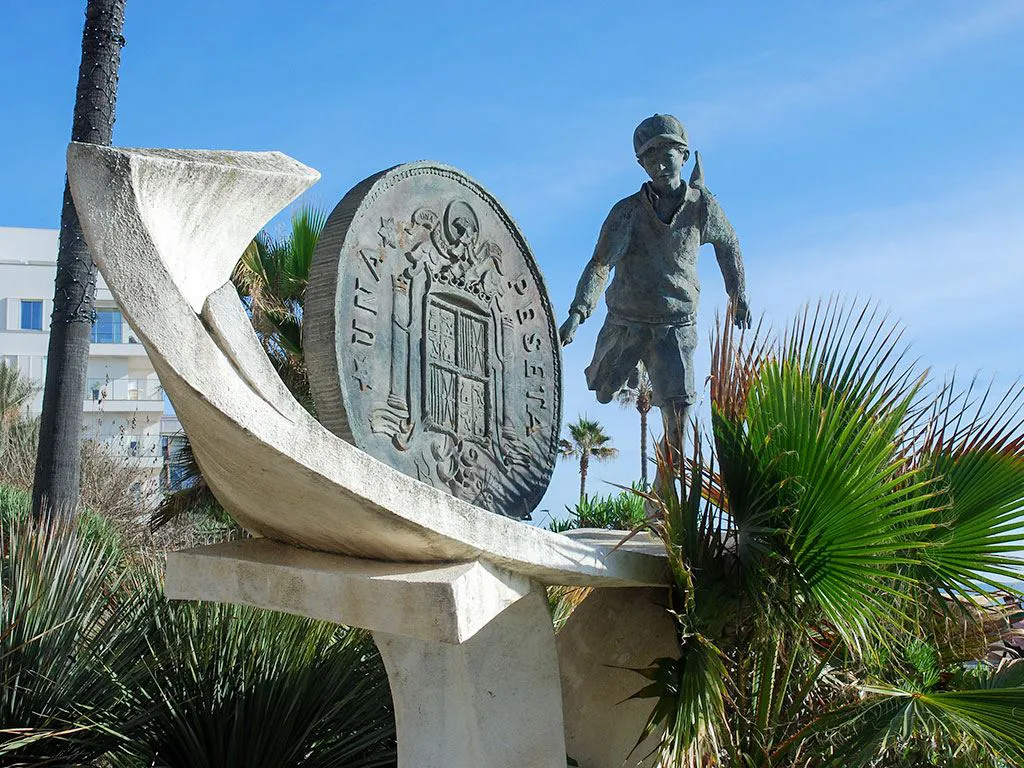
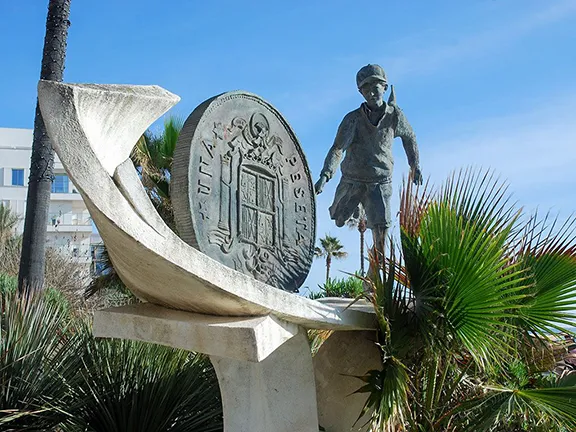
The sandy town beach is called La Rada. It has numerous chiringuitos and beach bars and is a favourite with Spanish families at weekends.
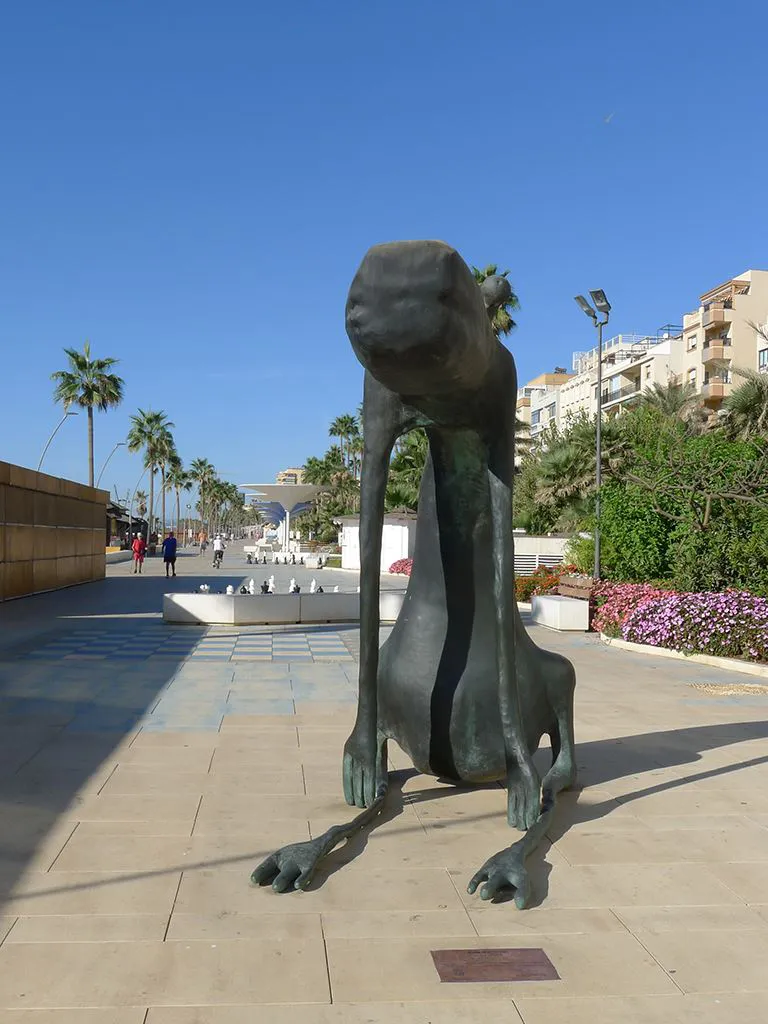
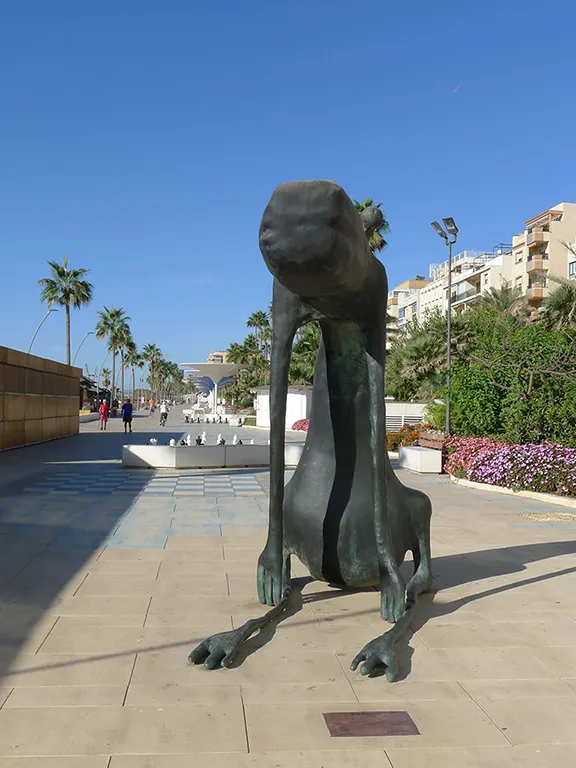
Image by Philip Crawford
At any of the roads leading inland from the paseo you can venture into the old town. Cyclists are allowed on all the streets including the pedestrianised areas.
Estepona is a traditional town. It takes a siesta summer and winter from 2pm until at least 4pm so shops, museums etc tend to close. The bars and restaurants stay open although the latter may stop serving lunch about 4pm to reopen at 7.30pm or even later.